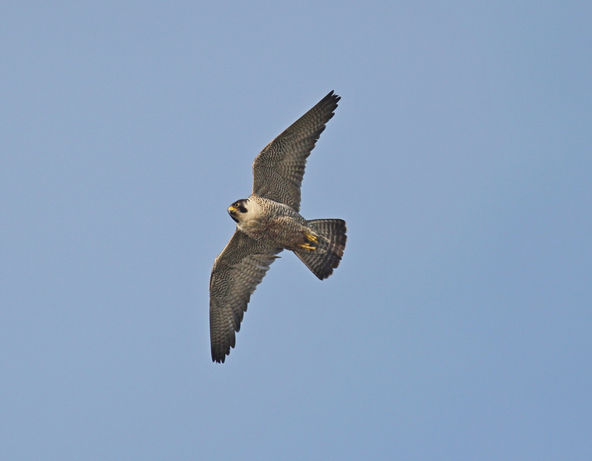

PEREGRINE
I love all raptors, but the peregrine is my favourite. I spent many happy hours on Lundy watching them, unfortunately, they are not so easy to spot on Kefalonia. Peregrines are 380 to 450mm long with the female being considerably larger than the male. They have slate grey backs, with barred white underparts. The tail is grey with clean, thin, black bars and a white band at the end. The top of the head and broad moustache is black, contrasting with the white sides of the neck and throat. The feet and cere (top of beak), are yellow and the beak and claws are black. Juveniles are browner and their underparts are streaked rather than barred.
A peregrines diet depends on where it lives, with mountain birds feeding on pigeons, doves and game birds. The shore dwelling birds feed on waders, waterfowl and songbirds. They hunt mostly at dawn and dusk, when the prey is more active and it is cooler.
Peregrines mate for life and tend to use the same nesting site. The nest is normally on a cliff edge, with 3 to 4 eggs being laid and incubated for 1 month. The chicks fledge from 42 to 46 days after hatching and remain dependent on the parents for a further 2 months.









